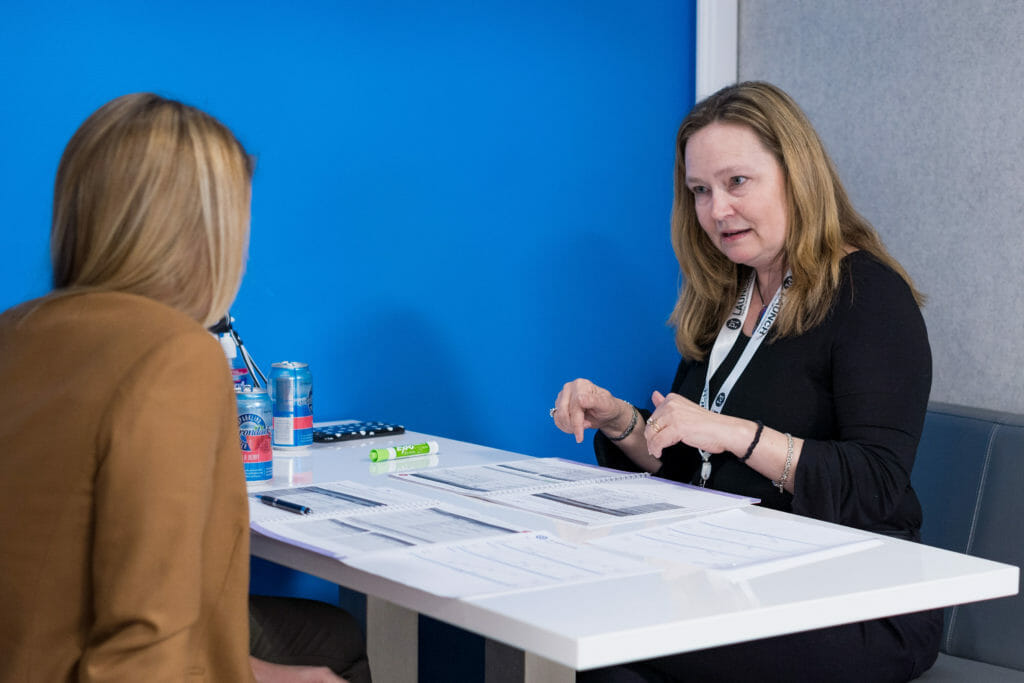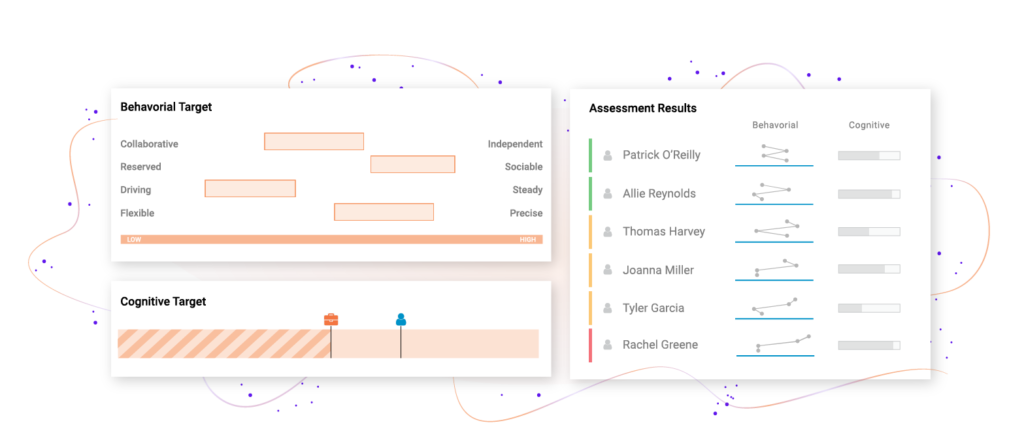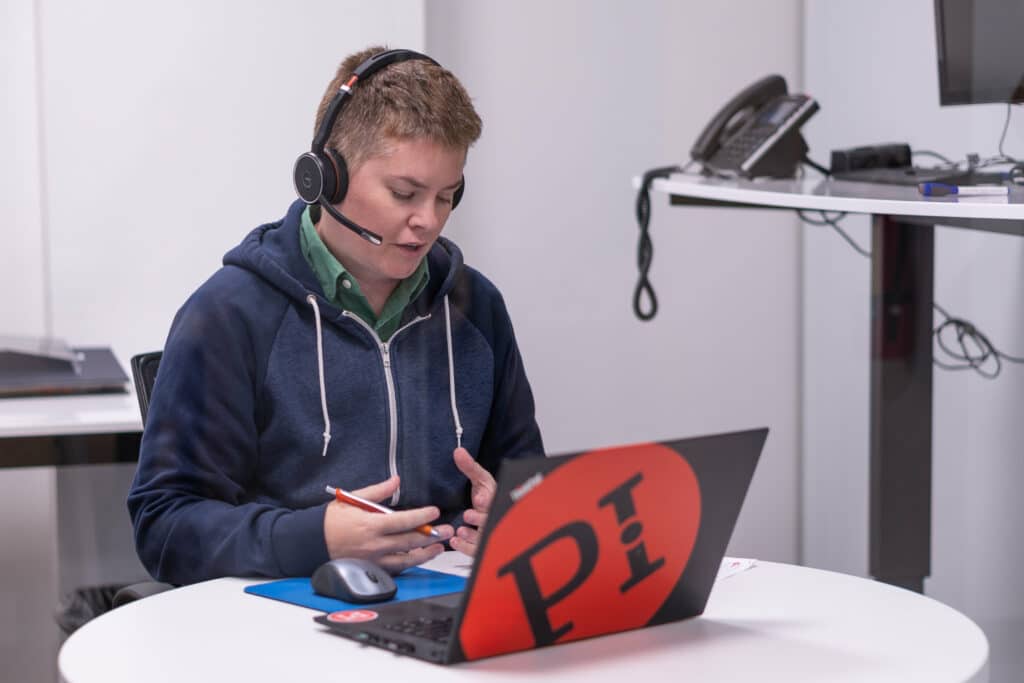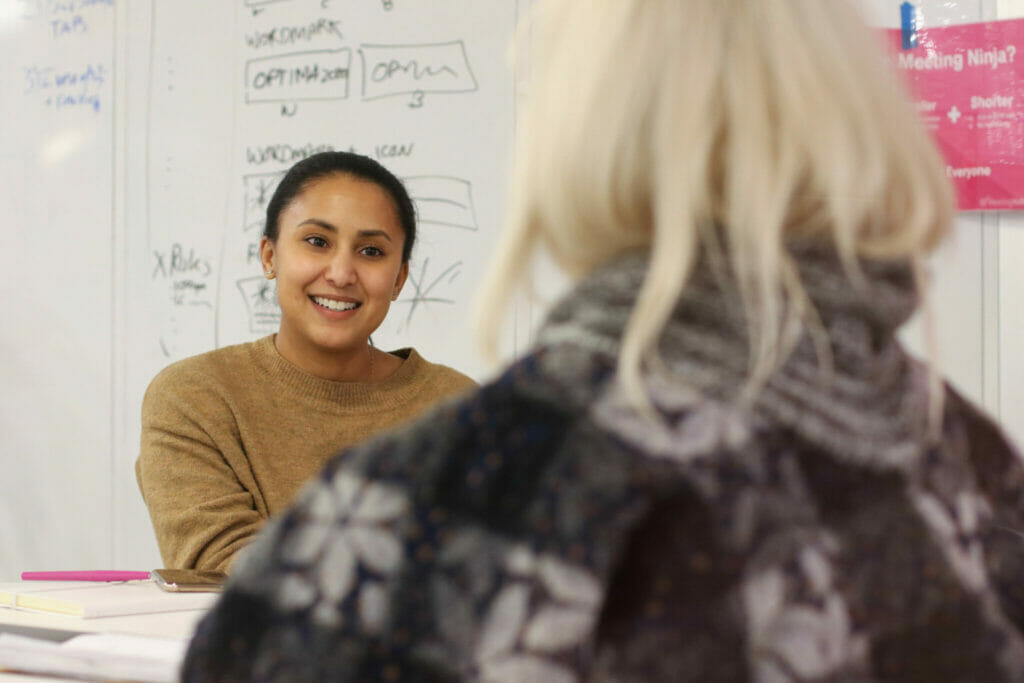As organizations adapt to a rapidly changing world, hiring great talent has become a critical art. Between hard-to-fill positions and bleeding bottom lines, the cost of a mishire can sting long after a person’s tenure ends. It’s important, then, to optimize your recruitment process, starting with Hiring 101: how to be a good interviewer.
According to the 2021 State of Talent Optimization report, 55% of companies are struggling to attract and retain talent. As a recruiter or hiring manager, making the right hires is essential to organizational success. And that begins with an effective interview process.
How do you go from being a good interviewer to a great one? Go beyond the typical list of behavioral interview questions. What are you listening for? How are you investigating and confirming your applicant’s fit to the job, the team, and the culture?
Applicants are interviewing you as well. How do you prepare for their questions and expectations? How can you best prepare for and manage applicant ghosting? In this article, we’ll explore what makes a successful interview—one that mitigates bias and prioritizes not just the candidate, but also the team you’re building.
Here’s what we’ll cover:
- Qualities of a good interviewer
- What does a successful interview look like?
- What are the best interview techniques?
- How talent optimization helps

Qualities of a good interviewer
A good interviewer often possesses qualities you’d associate with any high performer. They’re organized, poring over cover letters and preparing a relevant list of questions. They’re diligent, and can take notes while practicing active listening. And they’re amicable; they give positive body language, maintain eye contact, and bring an open mind to interviews.
But being just a good interviewer doesn’t guarantee success. A great interviewer goes a level deeper in their preparation, tailoring the interview experience to assess both the needs of the job and the specialities of the candidate. This requires a clear understanding of the role’s requirements (e.g., behavioral tendencies, cognitive ability, workplace values, etc.) and an ability to gauge the fit of those job characteristics to your candidate.
Here are some steps on how to prepare properly:
1. Write a great job description.
Set your job candidates up for success long before they enter an interview scenario. This starts with creating a stellar job description.
Make sure your job description is engaging, accurate, and up to date. Before you start writing, align with other stakeholders—such as a high performer currently in the role, or their manager—on must-have traits. Include clear action words that probe for the right behavioral wiring, work experience, and skill set.
Say the job is a Product Designer role, which requires constant innovation and agility. You may include the following bullets:
- Big-picture thinker and visionary
- Likes to put their thumbprint on projects
- Enjoys working at a fast pace
- Craves variety
- Able to take risks
While tailoring your job descriptions is great, it’s important to strike the right balance. The use of gendered wording or stringent benchmarks may discourage or exclude candidates who are otherwise strong fits for the role. Use data and words responsibly, be cognizant of biases, and always strive for inclusion.
2. Review the job candidates’ resumes.
Once resumes start piling up, you’ll want to review them to see how well they stack up against your job description. Specifically, look for language that supports the behavioral characteristics and cognitive ability required for the role.
Take the example of the Product Designer from before. When scanning candidate resumes, you could pay attention for words such as:
- Independent
- Fast-paced
- Proactive
- Risk-taker
Remember, though: A resume is only one data point in a candidate’s application. It’s important to consider the “whole” candidate during the screening process. That includes not just one’s resume, but also their work history, references, hard and soft skills, and pre-employment testing results.
3. Prepare the right questions.
After you familiarize yourself with a candidate’s background, design a structured interview that bridges your understanding of this candidate and the job to fill.
Deliberately craft behavioral interview questions that help you investigate and confirm how well this person’s natural behavioral tendencies fit the needs of the job. Also include possible follow-up questions, depending on the candidate’s answers.
For this Product Design job, you could ask the interviewee:
- “Tell me a time when you had to take the lead on a project.”
- “Describe a time when you were tasked with multiple competing priorities. How did you handle the situation?”
- “What about a time you fought for an unpopular idea? How did you handle the conflict?”
PI Hire gives you the tools to lead interviews with confidence. Use the PI Job Assessment™ to align on ideal candidate traits, and build a “Job Target” based on behavioral and cognitive data. PI then generates custom interview questions that probe for a candidate’s behavioral strengths and cautions—so you can make exceptional hires.

Join 10,000 companies solving the most complex people problems with PI.
Hire the right people, inspire their best work, design dream teams, and sustain engagement for the long haul.
4. Consider the candidates’ cultural fit.
Even if your candidate is the right behavioral fit, that doesn’t guarantee they’ll share your organization’s values. That’s why it’s worth interviewing not just for behavioral fit, but also culture fit.
Prepare culture fit questions that assess how a candidate likes to “get things done” in the context of your organizational culture. Understand what you are listening for in the interviewer’s response, and see where there’s fit or gaps.
If you have an Exploring Culture, for instance, your organization likely puts a premium on innovative thinking and an ability to adjust to fast-changing timelines. Here are some questions you may ask to assess culture fit:
- “One of our core values is innovation: What does that mean to you?”
- “Are you someone who prefers to follow the rules, or to break them? Why?”
- “Tell me a time when you had to problem-solve on a tight timeline. What was the problem? Who was involved? What solutions did you consider? What was the outcome?”
Beyond culture fit, there’s also value in “culture add.” That means considering talent that doesn’t necessarily fit your company culture, but rather enhances it. Doing so allows you to avoid groupthink and combat biases, while advocating for workplace diversity and inclusion.

5. Take your team dynamics into account.
As you consider the candidate’s fit within the larger organizational schema, don’t be afraid to get tactical. This person isn’t just taking on a role within your organization; they’re reporting to a manager and shaking up an existing team.
It’s pertinent, then, to consider how this candidate might enhance or disrupt current team dynamics. And that requires a thorough understanding of the strengths and gaps of your team.
Is this person doubling up on an existing role? Are they filling a critical gap? Will they serve to amplify your existing dynamics? Or, will they function as a “balancer” who can challenge the group to think differently?
The answers to the above will depend on the specific needs of your team. Heading into the interview, ask yourself the following questions:
- “Am I looking to prioritize innovation and agility?”
- “Am I more focused on improving results and discipline?”
- “Am I in need of someone who thrives on process and precision?”
- “Am I looking to improve the team, employee, or client experience?”
PI Design lets you take these questions and put them to action. Powered by behavioral data, Design shows how a candidate’s behavioral strengths and caution areas compare to the collective behavioral makeup of your team. See how this hire would improve or detract from the current team—so you can deliver on your team’s goals.

6. Use a scorecard to ensure consistency.
Throughout the interview process, it helps to ensure all parties involved are using the same grading system. For example, you could create a rubric that assesses candidates on a scale of 1 to 10 (or color-coded red, yellow, or green) for each of the following:
- Briefcase (resume, skills, etc.)
- Behavioral fit
- Cognitive fit
- Culture fit
- Team fit
Using a standardized template helps to create consistency, while reducing the risk of unconscious bias. That way, great candidates can shine, and your team can get clean data to inform the entire hiring process.

What does a successful interview look like?
A successful interview includes proper communication right from the beginning. That starts with setting the stage for the interviewee.
Explain the interview process to them. Tell them:
- Who will be involved
- What are the various steps
- When each step takes place
- How they’ll be kept in the loop
This sets the right tone for candidates, and will influence how your applicant will respond to the job interview process. It also reflects well on your company culture, adding credibility to your employer brand.
As a bonus, being candid with candidates helps reduce the frequency of applicant ghosting. It also opens up the line of communication, which can help the interviewee best prepare for questions and follow-ups.
What are the best interview techniques?
Asking behavioral-focused interview questions is a must. Never ask a question that leads to a “yes” or “no” answer. Also never pose a “leading question,” which means you’re phrasing it in a way that alludes to what you’re looking for in their response.
For example, if you’re looking for someone who’s detail-oriented, avoid a direct question like:
- Do you consider yourself detail-oriented? (They’ll assume the answer is “yes.”)
The best questions, by contrast, would be open-ended, without a clear right or wrong answer. Examples include:
- Can you walk me through how you approach problem-solving? What are the typical steps to get to a solution?
- Do you consider yourself more of a big-picture thinker, or someone who lives in the details? Why?
How talent optimization helps
We should always think about talent optimization when preparing for the interview process.
First, separate the meaning of “talent” and “optimization.” Talent is something we need, seek, and desire. Optimization is helping team members make the most of their talents in relation to the team’s function and success.
How do we ensure we’re hiring the right talent, and putting them in places where they thrive?
Here are some things to consider:
- What type of talent (e.g., skills, natural behaviors, working-knowledge, education) does the interviewee possess?
- What type of talents (e.g., required/preferred skills, behavioral traits, institutional knowledge, education, years of experience) are required in the job?
- Finally, what is our team missing that could further optimize our strategic plan more effectively, efficiently, and intentionally?
Even after the end of the interview process, a successful interviewer is practicing talent optimization year-round. That starts by asking the following:
- “What improvements can our team make to increase our momentum?”
- “How do I hire right and continually inspire and retain talent?”
- “How often do I stop and survey my talent so that I stay focused on strengths and address opportunities?”
Being deliberate about the dynamics of your team now, and anticipating your needs in the future, is how you’ll fill the gap between your business plan and your business results.
Shelley Smith, CEO of Premier Rapport, Inc. and consultant at PIMidlantic, helps business owners and executives find and repair the “culture leaks” in their organizations that prevent them from being as productive and profitable as they can be. Using a proprietary process of inquiry, awareness and leader development, she helps businesses create the workplace environment teams need to drive success.
Throughout her 35-plus-year career, Shelley has developed and implemented plans for large corporations such as Marriott as well as for small “mom-and-pop” businesses to advance their strategies and manifest stronger company cultures. She is the author of numerous books, including Brass Ovaries Own Yours: Master the Mindset, Change the Game and How to Avoid Culture Big Fat Failure (BFF).








